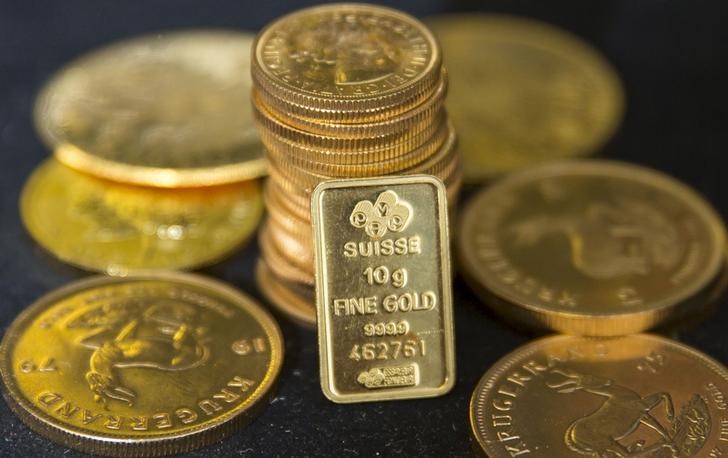Investing.com– Gold prices rose in Asian trade on Tuesday, recouping some overnight losses as traders held out for dovish signals from an upcoming testimony from Federal Reserve Chair Jerome Powell.
The yellow metal retreated on Monday, but was still sitting on some gains through the past week as a swathe of soft labor market readings pushed up expectations for an interest rate cut in September. A weak dollar also aided gold’s advance.
rose 0.4% to $2,367.97 an ounce, while expiring in August jumped 0.5% to $2,374.40 an ounce by 00:21 ET (04:21 GMT).
Gold rises; Powell expected to provide more rate cues
Gold benefited from increased speculation over an interest rate cut in September, especially as the retreated.
Soft readings on the labor market saw traders betting that Powell will strike a dovish chord during a two-day , set to begin later on Tuesday.
While Powell had recently noted progress towards disinflation, he had also said that the Fed still needed more confidence to begin cutting rates.
Beyond Powell, more Fed officials are also set to speak this week.
Key inflation data is also on tap, and is likely to factor into the Fed’s outlook on interest rates.
Lower interest rates bode well for gold and other precious metals, given that they diminish the appeal of the dollar and debt, which usually shine in a high-rate environment.
Other precious metals rose on Tuesday. rose 0.7% to $1,022.05 an ounce, while rose 1% to $31.218 an ounce. Silver had also largely outperformed gold in recent months.
Copper prices rise, more China cues awaited
Among industrial metals, copper prices rose further on Tuesday as they recovered from steep losses in June.
Benchmark on the London Metal Exchange rose 0.2% to $9,933.50 a tonne, while one-month rose 0.4% to $4.6245 a pound.
Copper traders were focused squarely on more economic cues from top importer China, with and figures due later this week.
But China was a sore point for copper, as waning optimism over the country sparked steep losses in the red metal through June. Fears of a trade war with the West also kept copper prices relatively subdued.
Read the full article here











